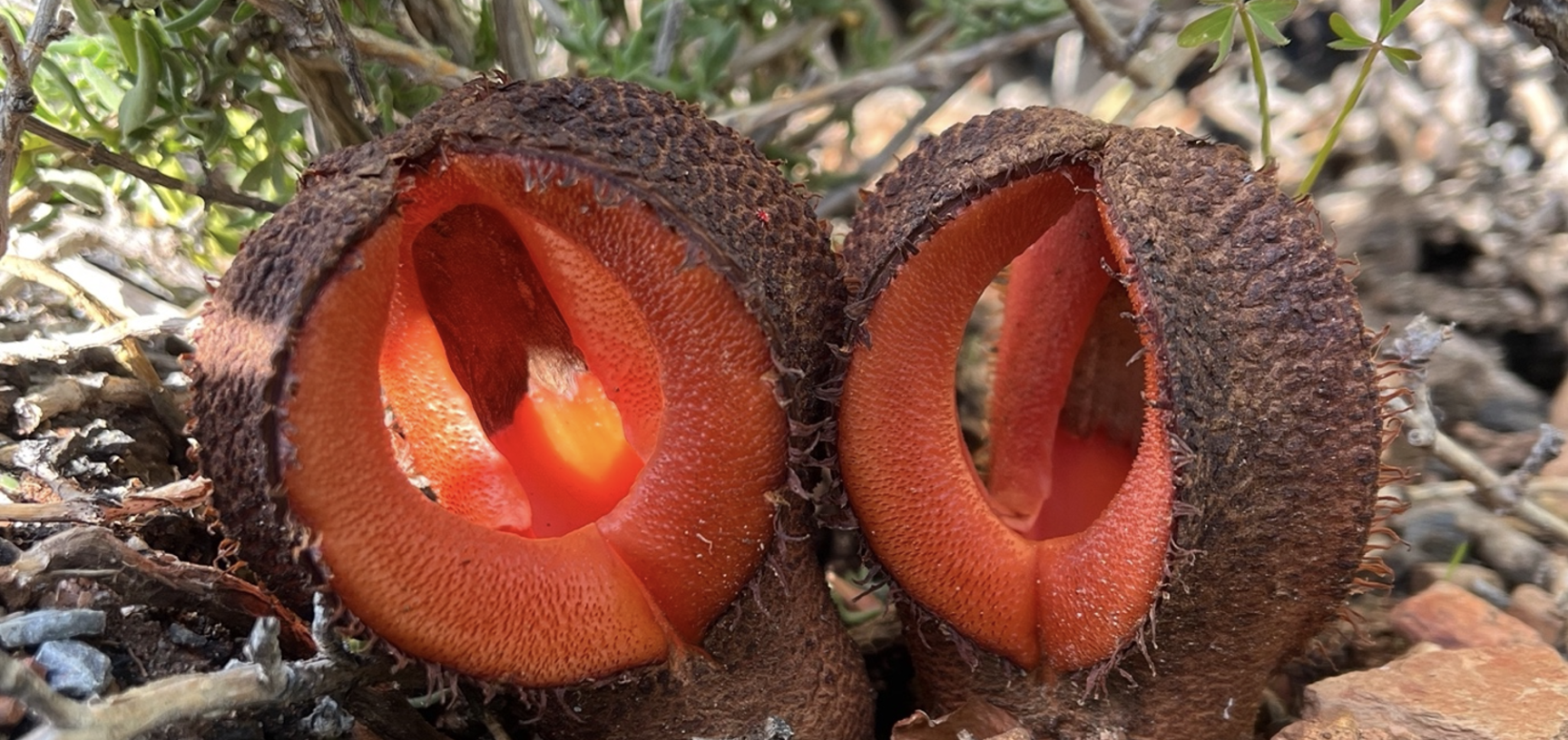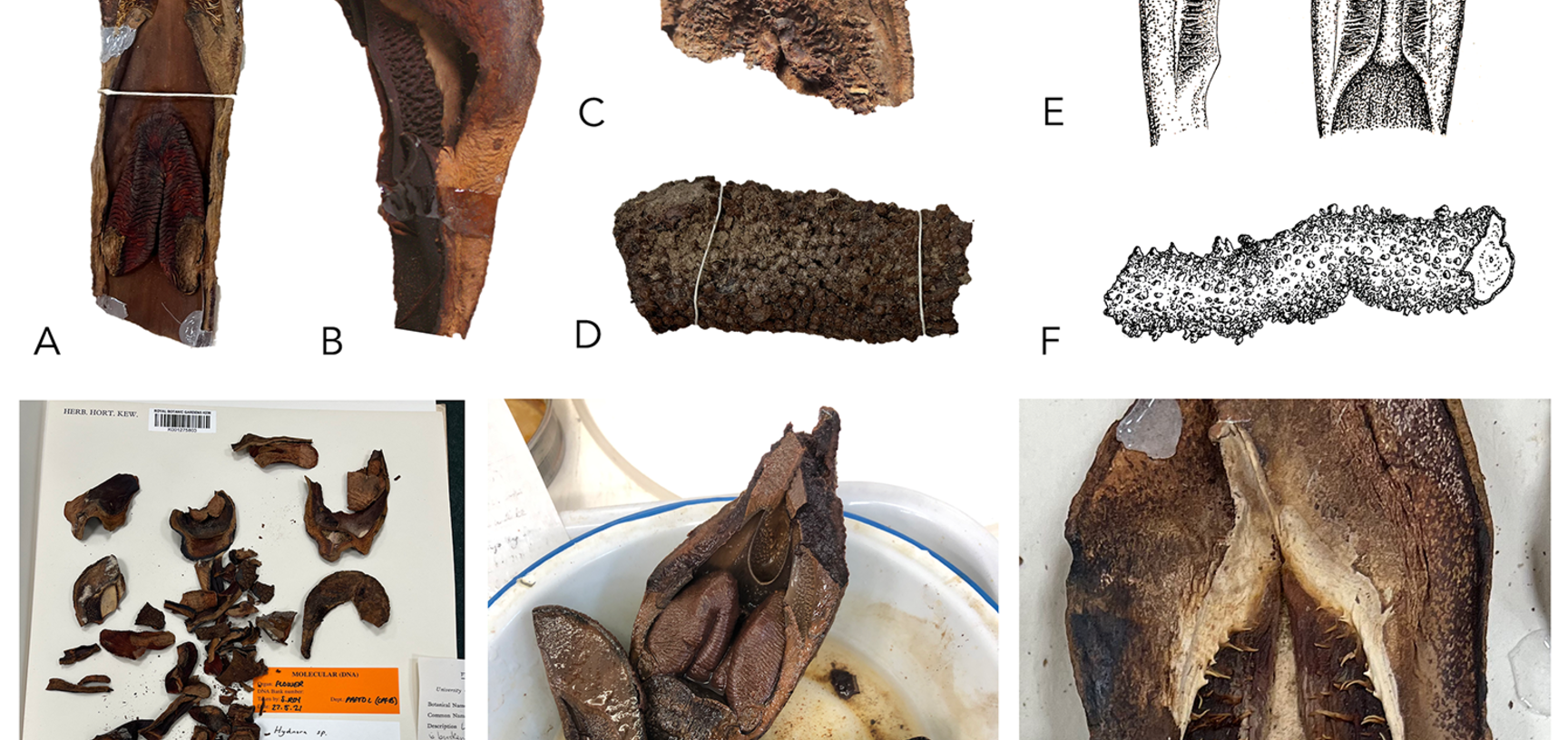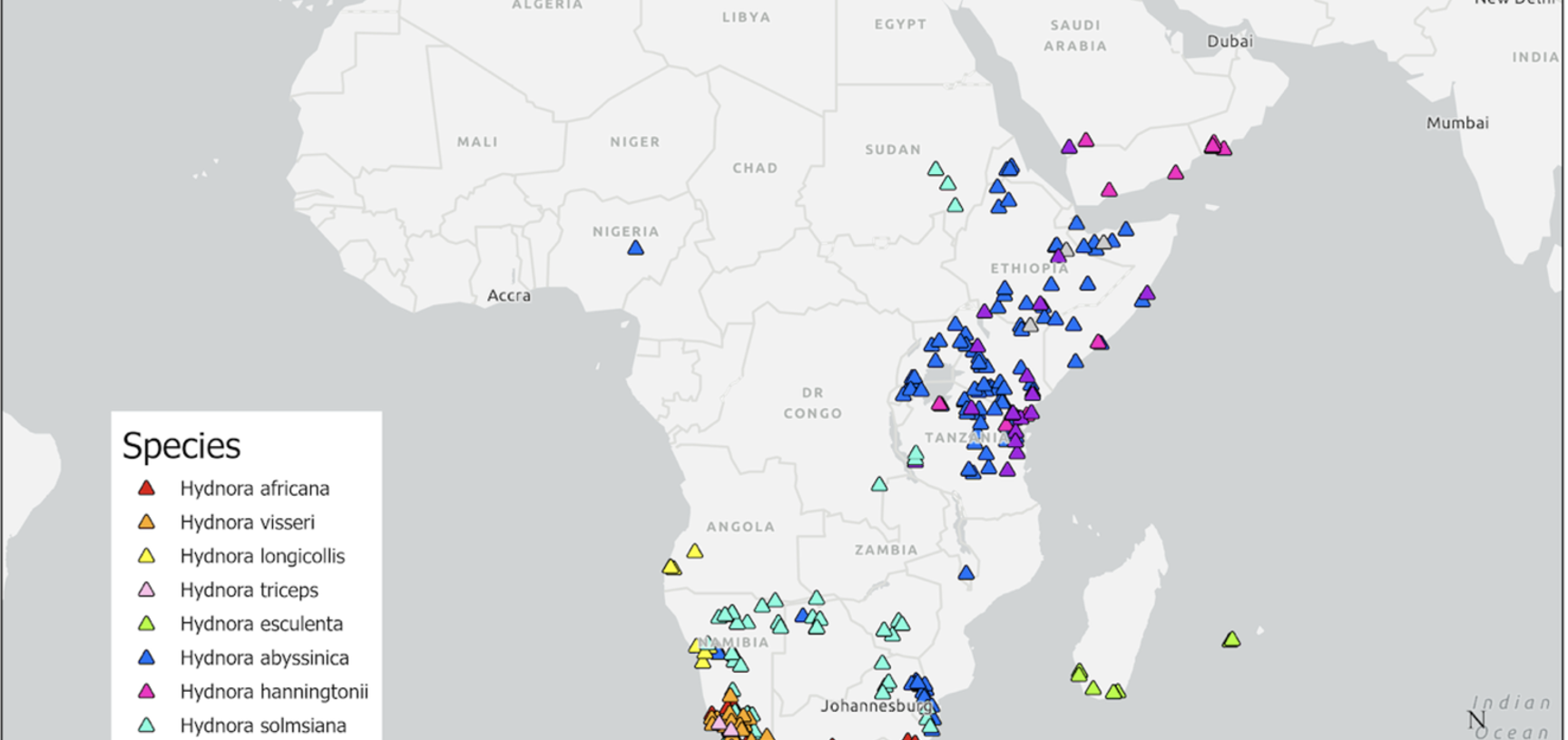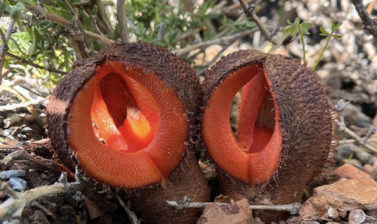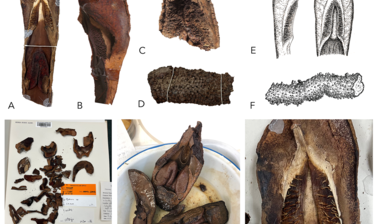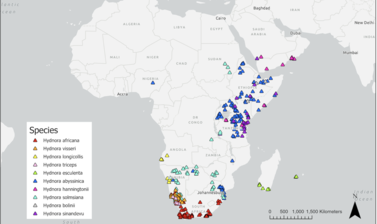New species of Hydnora: an extraordinary parasitic plant from Africa
A new species of Hydnora has been identified by a team of botanists and researchers from Kew Gardens, University of Manchester and Oxford Botanic Garden and Arboretum. In this post, PhD student Sebastian Hatt details their findings.
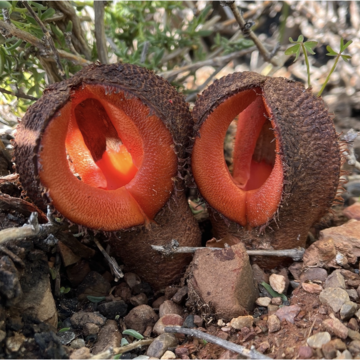
Fig. 1: Hydnora africana flowers growing in South Africa
Hydnora are without doubt some of the strangest plants of all. Indeed, they bear closer resemblance to fungi than plants in both appearance and life history (Fig. 1). The conventional photosynthetic green leaves and stem of a plant are entirely missing in Hydnora. These features have been lost over time as the planta gradually evolved to their current form. They survive not by harnessing the sun’s energy, but by parasitically stealing nutrients from another plant. Like many other parasitic plants (including Mistletoe and Rafflesia), Hydnora is relatively poorly understood by scientists, and many mysteries await discovery. Recent research undertaken at Royal Botanic Gardens, Kew and Oxford Botanic Garden has made efforts to document and classify the diversity of Hydnora, thus providing critical data towards understanding and conserving these extraordinary organisms.

Fig. 2: A map of the known distribution of Hydnora species
Hydnora are native to large areas of southern and eastern Africa, Madagascar and southern Arabia (Fig. 2). It was previously thought that there were eight species of Hydnora across their native range. However, our work has concluded that there are actually at least ten distinct species (Fig. 3). Although there are key differences between all ten species, they all share the same basic body plan. The main body of the plant is a large, sprawling underground rhizome (underground stem) covered in little warty growths (Fig. 4). As a result, for most of the year the plant is not seen at all, besides occasional cracks it causes in the soil surface. This rhizome can be over a few metres in length, although its true potential size is not known. There is one report from a town in Uganda where the underground rhizome grew so large under a pavement that it caused structural damage to the house above it!
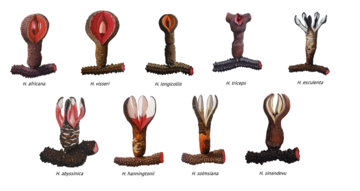
Fig. 3: Nine of the ten species of Hydnora (illustrated by Sebastian Hatt)
At the right time of year, typically following heavy rains, Hydnora will begin to flower. The flower of Hydnora is certainly its most striking and remarkable feature. Emerging from the warty growths on the underground rhizome, a monstrous fleshy flower will swell and burst through the soil surface. Once fully open and exposed to the air, its fleshy lobes (actually highly modified petals) will emit a foul odour in the hopes of attracting beetles to pollinate it. An individual plant can produce a number of flowers at once, with a report of one cluster of >30 flowers in Somalia producing an ‘evil odour so overwhelming one could scarcely stand in its presence’.
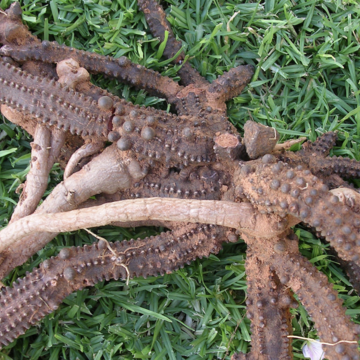
Fig. 4: The unearthed warty underground rhizome of Hydnora. Note the non-warty roots of the hosts attached to the rhizome.
Hydnora survives by extracting nutrients from a host plant. It connects to the roots of its host plant via a specialised structure called a haustorium. Once this connection is established, nutrients can flow from the host root into the xylem and phloem (equivalent to blood vessels for plants) of Hydnora. Unlike some parasitic plants, Hydnora is very selective in the host plants that it chooses to parasitise. Four of the species of Hydnora that grow in southern Africa parasitise exclusively succulent Euphorbia (spurge family). The remaining species, mostly in East Africa, parasitise Acacia trees (pea family), with the exception of one species that parasitises exclusively Commiphora trees (torchwood family). We are still without an explanation for why or how Hydnora are so selective over their hosts.
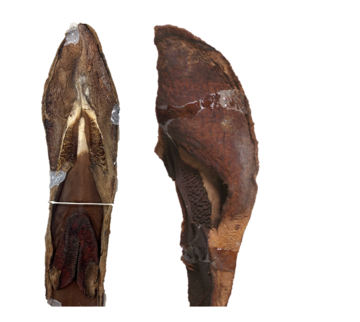
Fig. 5: A petal from a dried specimen of the newly described species Hydnora bolinii.
One of the new species described in our recent work is Hydnora bolinii (Fig. 5). It was identified as a new species while we were analysing plant specimens collected from Ethiopia and Somalia labelled as Hydnora abyssinica (a widespread species native to much of East Africa). Three of these specimens were found to be very distinct from all the others, with consistent differences in the shape and structure of the fleshy ‘petals’. Indeed, these specimens did not match the original description of Hydnora abyssinica. Following this revelation, we grouped these three anomalous specimens together and named them Hydnora bolinii (named in honour of Jay Bolin, world expert in Hydnora). To our knowledge, there are no known photographs of this plant alive. The small number of specimens collected may suggest it is relatively rare, although they were collected over a sizable area. Further fieldwork and collecting efforts in Ethiopia and Somalia will be required to uncover more information on this intriguing new species.
For more information, please check out our paper (soon to be published in Kew Bulletin):
https://www.biorxiv.org/content/10.1101/2022.10.13.512068v1
Future work is planned to sequence the DNA of these extraordinary parasites to search for clues about their evolutionary past. Using this approach, we hope to be able to shine light on how and why such an unusual plant could have evolved.
Sebastian Hatt
PhD student at Royal Botanic Gardens, Kew & University of Manchester.
In collaboration with Dr Chris Thorogood, Dr Olwen Grace, Prof. Duncan Cameron, Dr Jay Bolin & Prof. Lytton Musselman.


